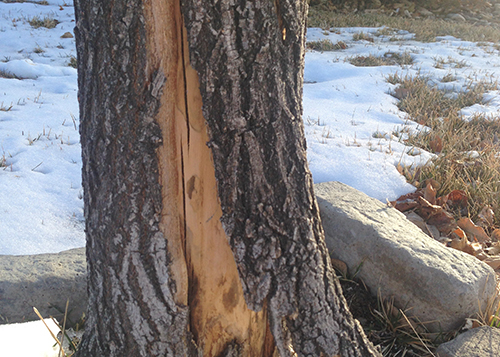Integrated Pest Management
Sunscald
Description
Sunscald occurs primarily in the winter months, but can occur on plants that have undergone recent pruning or damage that has exposed normally shaded, thin bark tissue. Direct, intense sunlight can heat unadapted tissues causing cell death. Sunscald is most prevalent on the south-southwest sides of tree trunks, but can occur on exposed branches. During the winter, intense direct and reflected sunlight will activate tissues under the bark. At night, temperatures fall and the cells freeze, causing cell death. This damage is not often noticed for a few years until the bark has split open exposing the compartmentalized damage below. These sites are prone to attack by flatheaded borers and fungal and bacterial pathogens.
Management
Wrap thin-barked trees with white horticultural wrap or a plastic tree guard in the fall and remove in spring after the threat of persistent snow. A 50:50 mix of white exterior latex paint with water applied to lower trunks can also provide protection.


